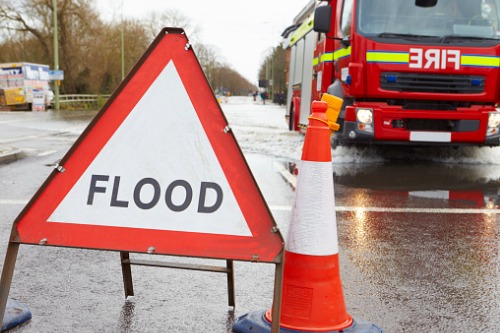Flood Response Planning

Authored by NMU
For business and commercial premises, it would be unthinkable not to have considered the threat from fire or criminal activity such as theft or arson, yet often businesses fail to recognise the threat from flood until it is too late
You would have noticed that flooding is reported more now than ever before, sometimes unpredictable with regard to areas that may be affected.
Think about how much money you spend on your fire and security alarm systems and how they help you sleep at night, knowing that your business and the jobs of your employees and colleagues are protected. Now consider how much time and money you have spent on flood emergency response planning and protection. You may have never experienced a flood, but its effects could be just as devastating to your business as a major fire or theft.
The following sets out some simple guidelines that can be implemented with minimum time and effort to give you the best possible chance of mitigating the impact of flooding in the future.
Risk Assessment
Your first step towards managing your flood risk is by risk assessment. Consider the likelihood of flooding to your premises by establishing a few simple facts:
Has the local area ever flooded before?Is the area located in a known flood plain?Is the premises/business close to rivers, streams, over ground or underground drainage channels, ponds, reservoirs, lakes or canals?Does the local topography affect flood water and flow?Do your premises incorporate any cellars or basements or low lying areas that may quickly become inundated?
If you have answered “yes” to any of the above questions, action should be taken to better protect yourself and your business from the perils of flooding. Even if your answer was “no” to any of these questions, it could still be prudent to take a look at the steps below – how many times have we heard flood victims say that their area has never before flooded since records began?
These actions may not involve spending any money, but simply require your time and management skills.
Here are some steps to help:
Flood Warnings
Subscribe to flood warnings for your area here https://flood-warning-information.service.gov.uk/warnings
Survey
Conduct a survey of your buildings and site in order to establish vulnerable equipment or stock and how these can be raised off the floor. You may need to move business-critical equipment such as computer servers or high value stock to an upper floor or construct a permanent mezzanine platform for their safety. Anything that may be damaged by flood water or the pollution that accompanies flood water must be identified and raised above floor level. Raising the storage of stock just a few inches may buy you enough time to move the stock when you are under threat. You should not forget any external storage of stock, equipment or vehicles that are left unattended.
Hazardous Materials
Consider how any hazardous materials may behave during a flood. You should check that any fuel storage tanks are anchored to the ground and that gas cylinders will not float away. Importantly you must consider how best to control any open vessels or containers that hold materials that can cause a safety risk or environmental hazard.
Disaster Recovery Plan
Formulate a disaster recovery plan (DRP). The DRP should include information such as your insurance broker’s emergency helpline number, details of your insurance policies, and other useful phone numbers such as customers, suppliers, tradesmen and anyone else you may need to contact or advise that your business is in crisis in the event of flood. It is recommended that a copy of your DRP is kept off site to ensure it can be accessed if the master copy cannot be retrieved from the affected premises.
Flood Emergency Response Plan
Formulate a “Flood Emergency Response Plan”. Keep it simple by listing the key actions that will need to be undertaken, who will undertake them and how. Make sure that you have contact numbers or addresses of the key staff you will need to take on emergency roles and make sure that they understand what is expected of them and are capable of contributing to the plan. Key response plan activity may include:
Shutting off mains gas, water and electricity supplies, ensuring that backup power to alarm systems is operating as intended.Closing any valves to oil storage tanks.Moving stock, furniture, documents, computers and portable electrical equipment to an upper storey.Moving material-handling equipment, chargers, vehicles and trailers to higher ground.Deploying any temporary flood protection measures such as sandbags to protect openings or help direct the flow of flood water away from buildings or stock.
Further guidance on flood response planning is available at www.environment-agency.gov.uk/business/topics/flooding/32362.aspx
Flood Hazards
Every year floods claim people’s lives so make sure that you and your team are aware of the hazards that you may face. Just six inches of fast flowing water can sweep you off your feet and less than a couple of feet are enough to float your car into deeper water. If you do have to walk through flood water, remember that manhole or drain covers may have been raised, dislodged or washed away which can create a drowning danger. Flood water can often be contaminated with sewage or hazardous materials, so avoid any contact whenever possible by wearing appropriate footwear and clothing. Remember that no business is more important than a human life!
At NMU, we believe that helping our policyholders to prevent or reduce the damage and dangers caused by flooding, is a good investment. NMU’s risk management specialists are here to help.
We would rather be talking to you before the flood happens
Businesses who want to learn more about the surveys, risk assessments, training and advice that NMU can provide should contact their insurance broker.
For more information, brokers can contact our risk control team or your NMU Development Underwriter.





